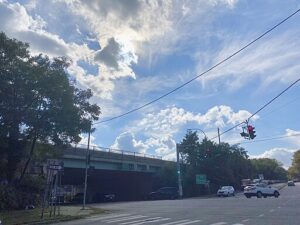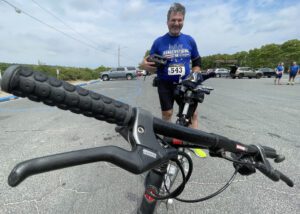Next week, The Long Island Advocate will publish a five-part podcast at the intersection of the immigrant rights battles taking shape throughout the country, and the perennial debates about suburban revitalization, local development, gentrification, and the importance of community participation and inclusion in decision-making. The story is about a groundbreaking housing discrimination case that took place in Farmingdale, Long Island between the early 2000s through 2014. Yet, the outcome of the case still resonates today, with national implications.
By Stef Krieger
Editor’s note: Stefan Krieger is Hofstra University’s Richard J. Cardali Distinguished Professor of Trial Advocacy, Director of the Center for Applied Legal Reasoning and Director Emeritus of Hofstra Clinical Programs.
Almost 20 years ago, in October 2004, frantic Latino tenants from one of the only affordable apartment complexes in the predominantly white Village of Farmingdale, in the heart of suburban Long Island, came to my law school clinic for help. At 1 a.m. the previous night, the local fire department had removed all their families from the building because of a possible fire hazard and relocated them to a gymnasium at a nearby university.
The village, seeing this evacuation as an opportunity to force the Latino tenants to leave the community and to replace the building with luxury housing, sought to block the tenants from returning. Despite the fact that their building was in serious disrepair — infested with vermin and mold and lacking in basic maintenance — and that they had experienced discrimination in the village, the tenants wanted to return to their homes and the community they had developed there.
Que Pasa, Long Island?
My law students took up the challenge, and after heated meetings with village officials, the tenants returned two days later. So began my clinic’s decade-long saga of representing nine of the residents of 150 Secatogue Ave. We eventually brought a federal housing discrimination lawsuit on behalf of the Secatogue Nine. The lawsuit not only compelled the village to address its previous discriminatory practices, but also empowered the Secatogue Nine.
This podcast series, which is to be published by The Long Island Advocate and broadcast on WRHU Radio Hofstra University next week, provides an in-depth examination of this saga. It tells the story of the journeys the Secatogue Nine took from Central America and Mexico to the United States, the problems they faced when they arrived at 150 Secatogue, and the discrimination that they and other Latinos encountered in the village. It examines how Farmingdale officials responded to anti-immigrant sentiment in the community with regulations targeting the pocket of the village where 150 Secatogue was located —“Little Latin America” — and eventually with its plans to redevelop the building. And, in the broader context of suburban America, it describes how predominantly white, middle-income suburbs have pushed back against the influx of immigrants in their communities through their land-use policies.
My law students took up the challenge, and after heated meetings with the village, the tenants returned two days later. So began my clinic’s decade-long saga of representing nine of the residents of 150 Secatogue Ave. We eventually brought a federal housing discrimination lawsuit on behalf of the Secatogue Nine.
The series also explores how the clinic’s housing discrimination case successfully challenged Farmingdale’s discrimination. For most of my 40 years practicing law, I have taught in law school clinical programs in which students learn the skills of effective lawyering by representing low-income clients and organizations in cases challenging discriminatory practices.
As described in this podcast, over the course of a decade, more than 100 of my students represented the Secatogue Nine, writing numerous court filings, conducting more than 20 depositions, preparing three expert witnesses, and drafting arguments and witness examinations for a planned six-week jury trial. But, just as importantly, as demonstrated in the podcast, for 10 years they met regularly with the clients — at times late into the night — so that the Secatogue Nine — not the lawyers — could make the key strategic decisions at every stage in the case.
Listeners will learn over the course of the five-part narrative how the tenant families of 150 Secatogue Ave., faced with the slow-motion pace of federal litigation, persevered despite the village’s hope to simply wear them the down. The frustration of endless waiting was overcome by the perseverance of the Secatogue Nine, ultimately compelling the village to change course and welcome them and other Latin American immigrant families back into the community.
This series provides a model of how one determined group of immigrants — assisted by engaged lawyers and committed local activists and supporters — can fight back against discrimination in suburban communities. As the fight over affordable housing in the suburbs reaches new heights in New York State and around the country, the lessons learned here should resonate in communities far and wide.









